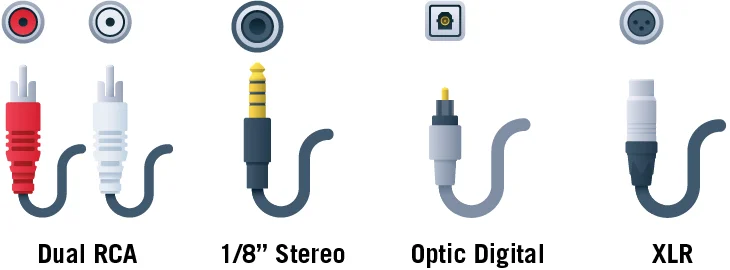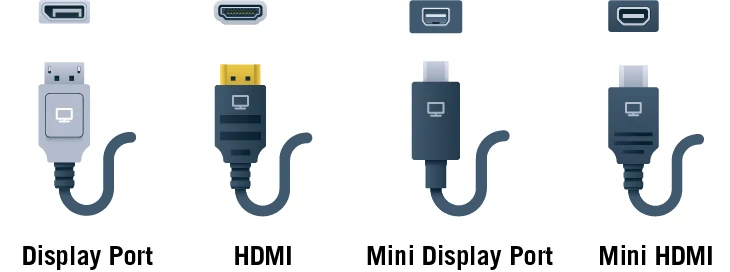If you have ever rented video or audio equipment from an exhibit house or show service supplier here is a list of common cable connectors and definitions you should know.
Audio Cables
- Dual RCA Cables come in pairs of red and white. They are found on many types of A/V equipment and send audio to the left and right sides.
- 1/8″ Stereo is used to connect devices such as an MP3 player or from mobile devices to an amplifier.
- Optical Digital uses light energy to transmit a digital audio signal through thin fiberoptic cables.
- XLR is used in audio applications ranging from live shows to professional recording sessions. They have three pins and a circular connector. They are used to carry signals over long distances.

Video Cables
- VGA (Video Graphics Array) Cable carries an analog video signal. It will work on monitors equipped with a VGA port. Still, the video and aspect ratio tends to look bad and doesn’t scale properly.
- Component Connection is a 3 Pin cable that has red, blue, and green RCA connections. This is a video only connection and has been replaced by HDMI.
- DVI (Digital Visual Interface) is a multi-pin adaptor that is found on some monitors and computers. It carries a digital video signal and can be converted to HDMI using an adaptor.

Audio + Video Cables
- DisplayPort is a digital connection used for high definition displays. It transmits video, audio, and other high-speed data.
- HDMI (High-Definition Multimedia Interface) is today’s go-to connection. It transmits a high-definition video and audio signal in one cable.
- Mini DisplayPort is mainly used on Mac computers and transmits digital audio and video. This can be converted to HDMI using an adaptor.
- Mini HDMI is used on DSLR cameras and standard-sized tablets. This cable is just a smaller version of a standard HDMI and offers the same definition.

If you decide to purchase your cables or connectors, quality is critical. Many places offer a “budget” option, but when it comes to A/V, we recommend purchasing quality cables. There is nothing worse than signal loss during an event!
Whether you are renting audio video equipment or purchasing your own, I hope these tips help you understand some of the cables and connectors you might need.
